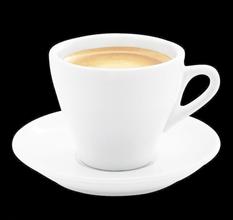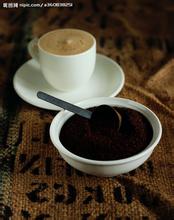Introduction to the flavor and taste characteristics of Colombian Hope Manor Coffee with rich taste and endless aftertaste
About 1000 BC, there was a hunter-gatherer society near Bogota today. Around 1000 AD, the American Indians created a political system. It is a pyramid-shaped structure with the top of the tower as the leader. In today's Colombia, two civilizations have adopted this complex system. One is Tayronas in the Caribbean region, and the other is Muisca near Bogota. Musika can also be translated as Chibucha.
The indigenous people of pre-independence Colombia were the Chibucha Indians. They use wooden and stone tools to grow crops such as corn and cassava and weave cotton cloth. The area is a famous gold mine in ancient South America, and the Chibucha people have a high level of gold decorative art. After the news that Napoleon I invaded Spain in 1808, the people of the region immediately launched an independence movement. On July 20, 1810, a large-scale uprising against Spanish colonial rule broke out in Bogota and the Governor of New Granada was arrested. In November 1811, representatives from all over the world organized Congress in Bogota, established the New Granada Joint Provincial Government, and declared independence on November 11. But Kundinamaka did not recognize the federation. At the end of 1812, the debate over the formation of a regime eventually led to civil war. It broke out again in 1814. In mid-1815, a large Spanish expedition arrived in New Grenada. Overthrew the United provincial government. In May 16, royalists took control of the whole of New Grenada. Spanish colonists made a comeback in 1815. On August 7, 1819, S. Bolivar led the insurgents to defeat the Spanish colonial army at the Battle of Boyaca and captured Bogota on the 10th, ending Spanish colonial rule in April 1826. The local rulers of Venezuela, led by Pais, and those opposed to the new Granada, led by Santander, demanded the establishment of a separate state. Through the mediation of Bolivar, separatist activities have been temporarily stopped, but internal contradictions and factional struggles still exist.
The Congress of Colombian National Representatives was held in Okania on May 8, 1828. There was a sharp conflict between the centralized faction led by Bolivar and the federalist faction represented by Santander. After that, the separatist tendency in various places became more and more obvious.
In November 1829, Venezuela issued a statement withdrawing from the Republic of Greater Columbia.
In January 1830, Bolivar resigned as president in Congress in an attempt to bridge differences and safeguard national unity, but to no avail. On May 31, Quito announced its withdrawal from Colombia and the establishment of the Republic of Ecuador. Bolivar died on December 17, followed by the disintegration of Colombia. In 1831 the region of Colombia and Panama was renamed New Granada
This man has a name. His name is Juan Valdez. People used to call him "Uncle JUAN VALDEZ". Juan Valdez is the representative image of Colombian coffee growers and a symbol of Colombian coffee, which distinguishes it from coffee from other countries of origin and is accepted by different markets. In the last 40 years, Colombian coffee growers have made great efforts to create the "JUAN VALDEZ" brand we see today. In 2005, the New York Times confirmed the importance of this brand in the United States, because its trademark recognition has exceeded many of the world's leading brands and gradually become a world-famous brand. Now this uncle is the third-generation real-life version. Uncle Juan Valdez, who represents Colombian coffee farmers, as the ambassador of Colombian coffee, will travel around the world to promote Colombian coffee. A beard, a straw hat and the mules around him are his necessary wardrobe. Uncle Dou was also pleased to see him at the 2010 Shanghai World Expo, which symbolizes the Andes and implies that most of the Arabica coffee growing areas in Colombian coffee belong to high-altitude mountains. It is well known that the main coffee producing areas in Colombia are located in three mountains arranged with the word "Sichuan", all of which are part of the Andes. According to the geographical environment and climate, the characteristics and flavor of coffee in different regions are the same in Colombia, with beautiful mountains and rivers, beautiful scenery, pleasant climate, spring all year round, fresh air and refreshing air. Colombia's mild climate, humid air, and diverse climate make it a harvest season all year round, with different kinds of coffee ripening at different times. What they grow is Arabica coffee beans of unique quality, and the coffee made from this coffee bean has a rich taste and endless aftertaste, which can be called fine coffee. Nowadays, many people equate "Colombian coffee" with "high quality" and "good taste", just as only wine produced in the champagne region of France can be called champagne. Only coffee produced in Colombia and picked by hand can be called "Colombian coffee". Colombian coffee is one of the few original coffee sold in the world under the name of the country. In terms of quality, it has won praise unmatched by other coffee.

Important Notice :
前街咖啡 FrontStreet Coffee has moved to new addredd:
FrontStreet Coffee Address: 315,Donghua East Road,GuangZhou
Tel:020 38364473
- Prev

Introduction to the flavor and taste characteristics of Costa Rican goddess manor coffee
Costa Rica is located in the Central American isthmus, belonging to North America, 10 north latitude, 84 west longitude. It is bordered by the Caribbean Sea to the east and the North Pacific Ocean to the west, with a coastline of 1290 km (212km on the east coast and 1016 km on the west coast). Costa Rica borders Nicaragua in the north (309 km long border) and Panama (639 km long border) south-southeast. Total
- Next

Introduction to the flavor and taste characteristics of Nicaraguan Coffee Heavenly Manor
Managua, the capital of Nicaragua, is located in the west of the border, on the south bank of Lake Managua, hence its name. The northwest is 140 kilometers away from the Collinto seaport on the Pacific coast. 55 meters above sea level. It is a Spanish city with beautiful scenery. Because it is located to the east of the Pacific volcanic active seismic belt, there have been four strong earthquakes in the city in the past 100 years, including one in December 1972.
Related
- Does Rose Summer choose Blue, Green or Red? Detailed explanation of Rose Summer Coffee plots and Classification in Panamanian Jade Manor
- What is the difference between the origin, producing area, processing plant, cooperative and manor of coffee beans?
- How fine does the espresso powder fit? how to grind the espresso?
- Sca coffee roasting degree color card coffee roasting degree 8 roasting color values what do you mean?
- The practice of lattes: how to make lattes at home
- Introduction to Indonesian Fine Coffee beans-- Java Coffee producing area of Indonesian Arabica Coffee
- How much will the flavor of light and medium roasted rose summer be expressed? What baking level is rose summer suitable for?
- Introduction to the characteristics of washing, sun-drying or wet-planing coffee commonly used in Mantenin, Indonesia
- Price characteristics of Arabica Coffee Bean Starbucks introduction to Manning Coffee Bean Taste producing area Variety Manor
- What is the authentic Yega flavor? What are the flavor characteristics of the really excellent Yejasuffi coffee beans?

